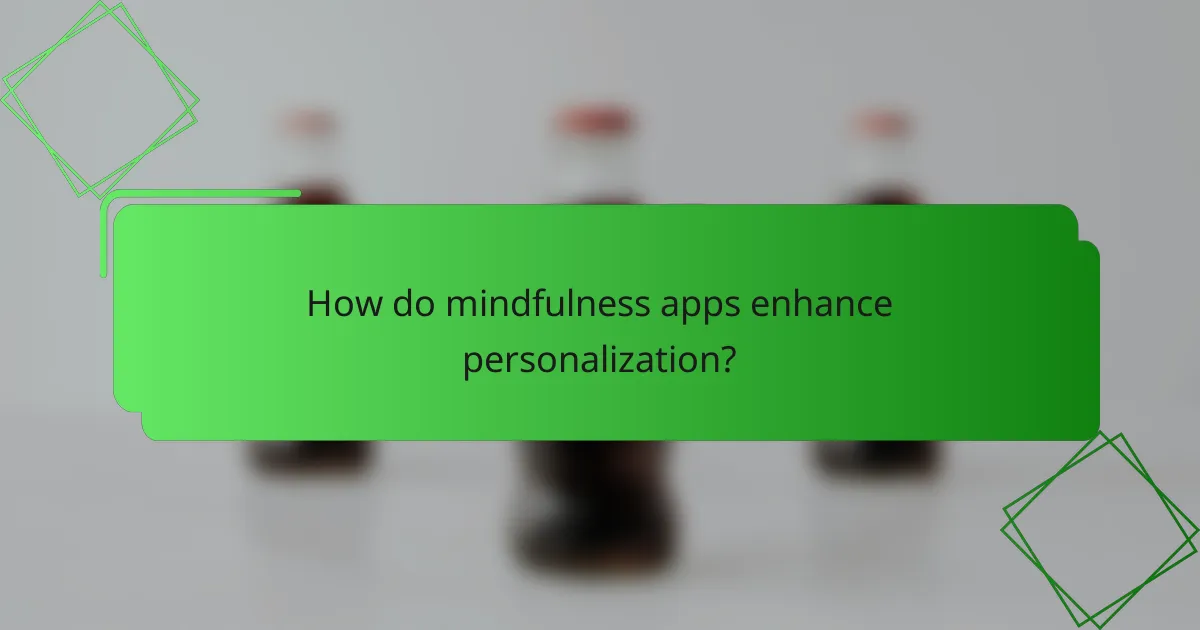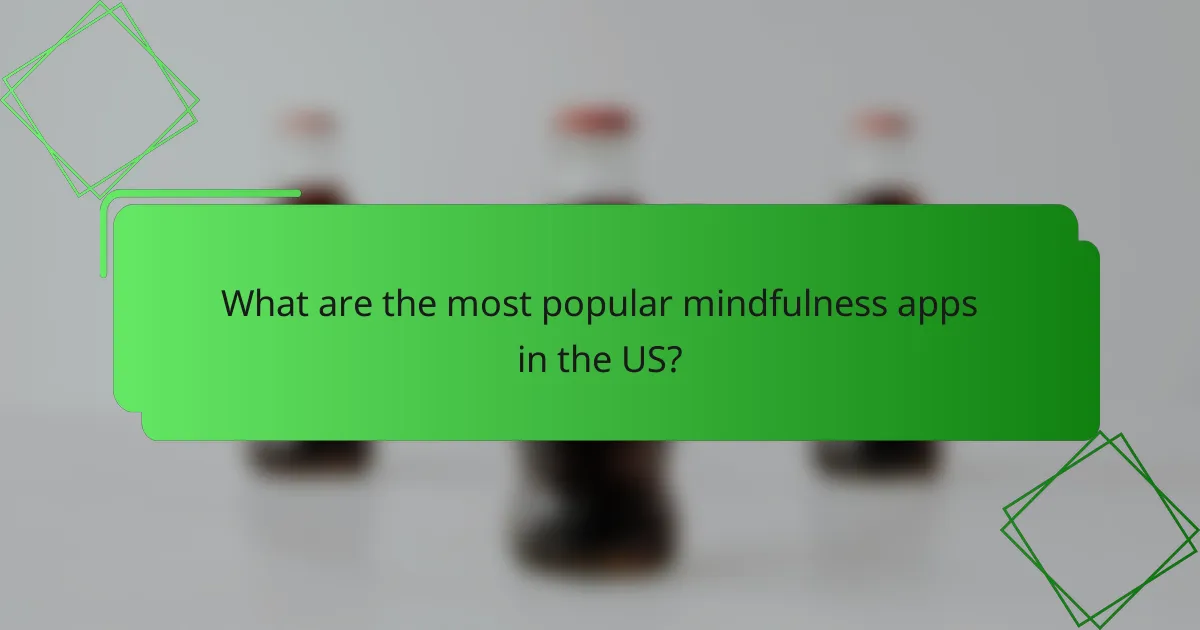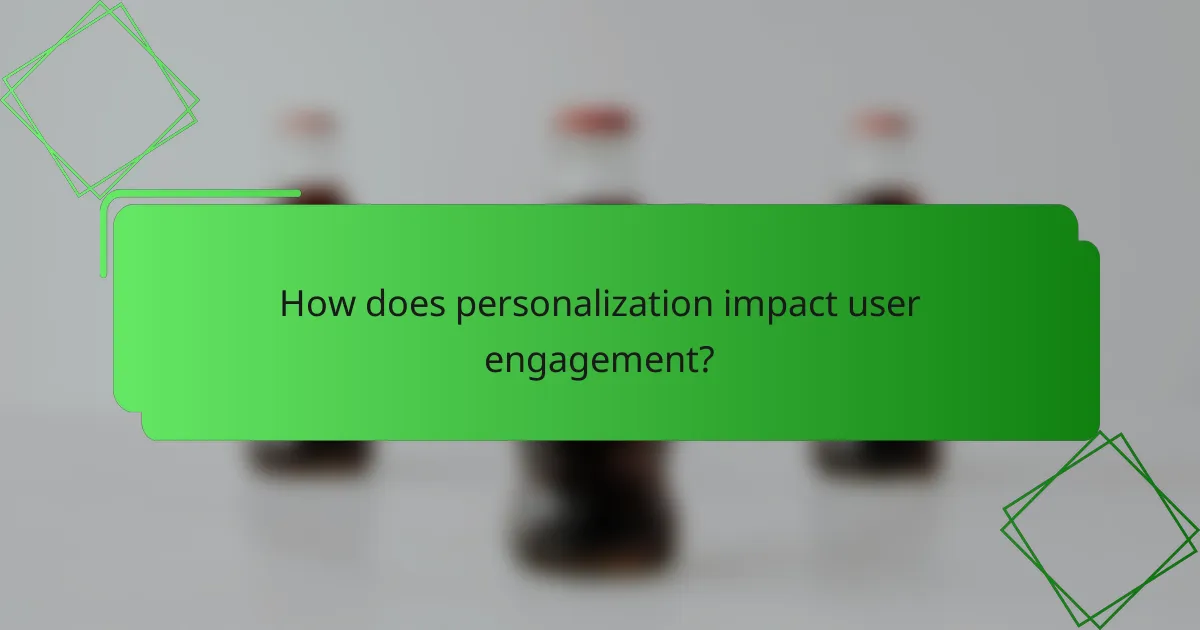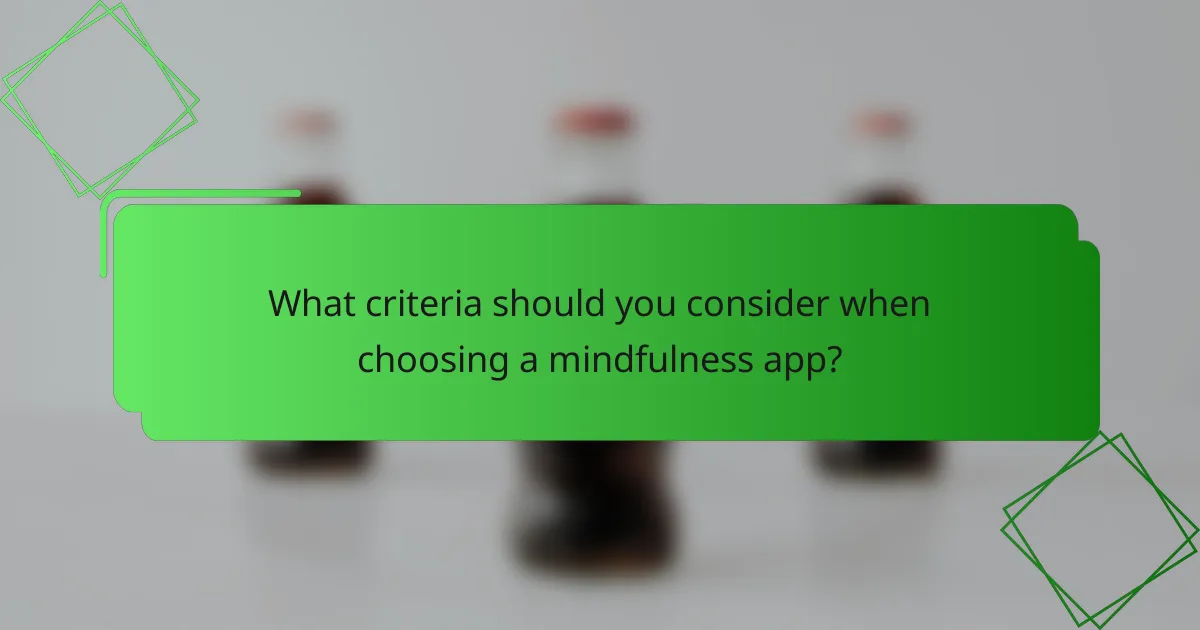Mindfulness apps have revolutionized the way individuals engage with mental well-being by offering personalized experiences tailored to their unique preferences and behaviors. This level of customization not only enhances user engagement but also fosters deeper connections, ultimately leading to more effective mindfulness practices and greater overall satisfaction.

How do mindfulness apps enhance personalization?
Mindfulness apps enhance personalization by tailoring content and features to individual user preferences and behaviors. This customization helps users engage more deeply with the app, leading to improved mindfulness practices and overall satisfaction.
Adaptive content based on user behavior
Mindfulness apps utilize algorithms to analyze user interactions, such as session frequency and preferred meditation types. Based on this data, they adapt content to better suit individual habits, offering suggestions that align with user interests.
For example, if a user frequently engages with stress-relief meditations, the app may prioritize similar content or introduce new techniques that focus on anxiety management. This adaptive approach keeps users motivated and invested in their mindfulness journey.
Customizable meditation sessions
Many mindfulness apps allow users to customize their meditation sessions by selecting duration, background sounds, and specific themes. This flexibility enables users to create an experience that fits their unique schedules and preferences.
For instance, a user may choose a quick 5-minute session with calming music for a busy day, while opting for a longer 30-minute session with guided imagery on weekends. This level of customization enhances user engagement and effectiveness.
Personalized progress tracking
Personalized progress tracking features in mindfulness apps help users monitor their growth and achievements over time. By providing insights into meditation frequency, duration, and emotional well-being, users can see tangible results from their practice.
Some apps offer visual graphs or badges for milestones, encouraging users to maintain consistency. This feedback loop can motivate users to stick with their mindfulness routines and set new goals.
User feedback integration
User feedback integration is crucial for enhancing personalization in mindfulness apps. Many apps solicit user input on their experiences, allowing developers to refine content and features based on real user needs.
For example, if users express a desire for more guided sessions on specific topics, the app can prioritize creating that content. This responsiveness not only improves user satisfaction but also fosters a sense of community and collaboration within the app ecosystem.

What are the most popular mindfulness apps in the US?
The most popular mindfulness apps in the US include Headspace, Calm, and Insight Timer. These apps offer various features designed to help users improve their mental well-being through guided meditations, relaxation techniques, and community support.
Headspace features
Headspace is known for its user-friendly interface and structured courses that cater to different experience levels. It offers a variety of meditation sessions, ranging from a few minutes to over an hour, focusing on topics like stress relief, sleep improvement, and personal growth.
Additionally, Headspace includes animations and illustrations that help explain mindfulness concepts, making it accessible for beginners. Users can track their progress and set reminders to maintain a consistent practice.
Calm’s unique offerings
Calm stands out with its extensive library of sleep stories, music tracks, and nature sounds designed to enhance relaxation and sleep quality. It features sessions led by well-known figures, which adds a unique touch to the meditation experience.
The app also provides daily meditations and themed programs that address specific issues such as anxiety and focus. Users can customize their experience by selecting different background sounds and lengths for their sessions.
Insight Timer community aspects
Insight Timer is distinguished by its large community of users and a vast selection of free guided meditations. It allows users to connect with others through groups and discussions, fostering a sense of belonging and shared learning.
The app features thousands of meditations from various teachers, covering a wide range of topics. Users can also create personal playlists and track their meditation habits, making it easier to stay engaged with their mindfulness journey.

How does personalization impact user engagement?
Personalization significantly enhances user engagement by tailoring experiences to individual preferences and needs. This customization fosters a deeper connection, encouraging users to interact more frequently and meaningfully with mindfulness apps.
Increased user retention rates
Personalized features, such as customized meditation plans or reminders based on user behavior, can lead to higher retention rates. Users are more likely to continue using an app that adapts to their specific goals and routines, resulting in a more sustained practice.
For instance, an app that tracks user progress and adjusts sessions accordingly can keep users motivated. Retention rates can improve by tens of percent when users feel that the app is relevant to their personal journey.
Higher satisfaction scores
When mindfulness apps offer personalized content, users often report higher satisfaction scores. Tailored experiences, such as selecting preferred meditation styles or durations, can lead to a more enjoyable and effective practice.
Surveys indicate that users who engage with personalized features typically rate their satisfaction significantly higher than those using generic content. This satisfaction can translate into positive reviews and recommendations, further enhancing the app’s reputation in a competitive market.

What criteria should you consider when choosing a mindfulness app?
When selecting a mindfulness app, consider personalization, user interface, and content quality. These factors significantly influence your experience and the app’s effectiveness in meeting your specific needs.
Personalization features
Personalization features allow the app to tailor content and experiences based on your preferences and progress. Look for apps that offer customizable meditation lengths, themes, and reminders to fit your lifestyle.
Some apps may include assessments to gauge your mindfulness level and suggest appropriate practices. This can enhance your engagement and help you achieve your goals more effectively.
User interface and experience
A user-friendly interface is crucial for a seamless experience. Choose an app that is easy to navigate, with clear instructions and intuitive design, which can help reduce frustration and encourage regular use.
Consider the overall aesthetic and how it aligns with your preferences. A calming design can enhance your mindfulness practice, making it more enjoyable and effective.
Content variety and quality
The variety and quality of content are essential for keeping your practice fresh and engaging. Look for apps that offer a range of meditation styles, such as guided sessions, soundscapes, and mindfulness exercises.
Check for content created by experienced instructors or backed by reputable organizations. High-quality content can significantly impact your mindfulness journey and ensure you receive valuable guidance.

How do mindfulness apps compare in terms of personalization?
Mindfulness apps vary significantly in their approach to personalization, which can greatly influence user engagement and effectiveness. Many apps use algorithms to tailor content based on user preferences, goals, and progress, while others offer more static experiences.
Headspace vs. Calm
Headspace and Calm are two leading mindfulness apps, each offering unique personalization features. Headspace focuses on structured courses that adapt to user feedback, allowing for a more guided experience. Users can select specific goals, such as stress reduction or sleep improvement, which the app then tailors accordingly.
Calm, on the other hand, provides a broader range of content, including sleep stories and music, with less emphasis on structured courses. Users can customize their experience by choosing from various themes and lengths, making it flexible for different preferences. However, this can lead to overwhelming choices for some users.
Insight Timer vs. Simple Habit
Insight Timer offers a vast library of guided meditations from various teachers, allowing users to personalize their experience by following specific instructors or themes. The app’s community features enable users to connect and share experiences, enhancing the personalization aspect through social interaction.
Simple Habit, in contrast, emphasizes quick, on-the-go sessions tailored for busy lifestyles. Users can select meditations based on their immediate needs, such as anxiety relief or focus enhancement. This targeted approach can be beneficial for those seeking immediate results but may lack the depth of longer, more structured programs found in other apps.

What emerging trends are shaping mindfulness app personalization?
Emerging trends in mindfulness app personalization focus on enhancing user experience through tailored content and features. By leveraging user data and preferences, these apps aim to provide customized practices that resonate with individual needs and lifestyles.
AI-driven recommendations
AI-driven recommendations play a crucial role in personalizing mindfulness apps by analyzing user behavior and preferences. These systems can suggest specific meditation sessions, breathing exercises, or mindfulness activities based on past interactions and stated goals.
For instance, if a user frequently engages with stress-relief content, the app may prioritize similar sessions or introduce new techniques that align with that focus. This targeted approach can significantly enhance user engagement and satisfaction.
When implementing AI-driven recommendations, it’s essential to ensure that the algorithms respect user privacy and data security. Users should be informed about how their data is used and have the option to customize their privacy settings.


